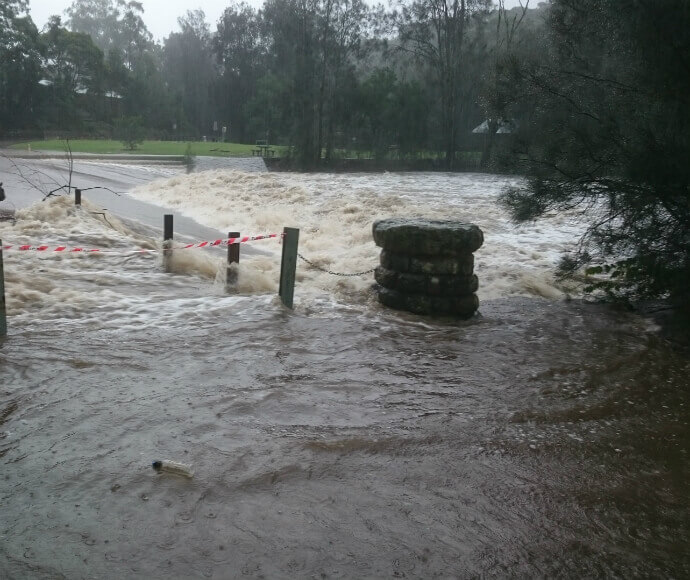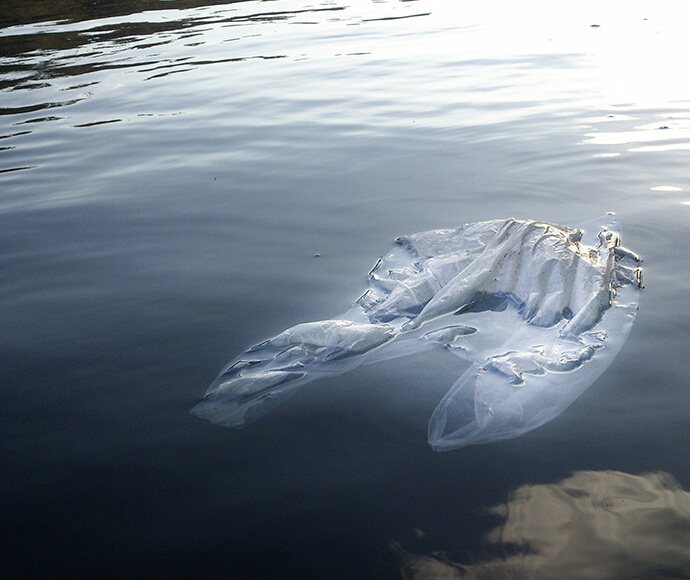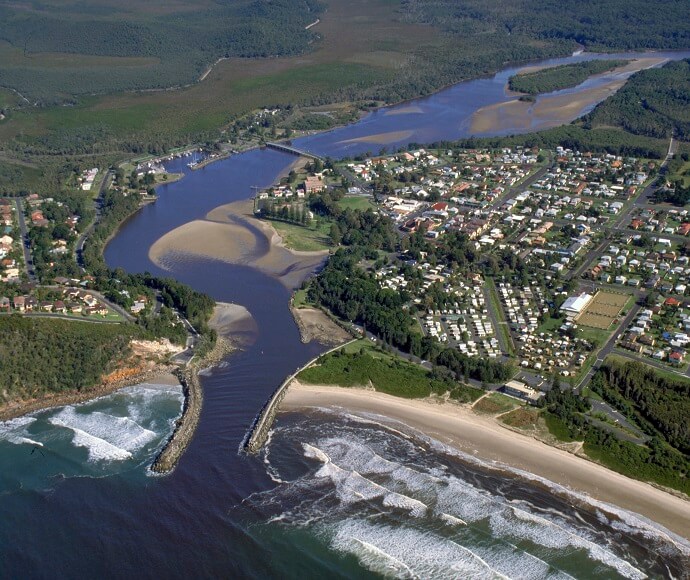Estuaries are impacted by pressures from human activities as well as natural events such as storms and floods.
Estuaries are complex, dynamic and relatively fragile environments. They are particularly sensitive to inappropriate catchment development, increased levels of sediment and nutrients and the degree of tidal flushing and residence time – the exchange of fresh water and ocean water.
Climate change
The type, condition and functioning estuaries is linked to and affected by the climate. Rainfall patterns, water temperatures, water levels, sunlight and wind conditions alone or in combination, play a part in influencing estuaries.
The predicted impacts of climate change in Australia vary across the country and will also respond to carbon emissions in coming decades. Predicted scenarios of extended dry periods, less frequent but more severe storms, water temperature increases, sea level rise and ocean acidification will all potentially play a significant role in how estuaries function, and how communities will interact with estuaries in the future.
Predicting the response in estuaries to climate change is speculative and complex. The Climate Change in NSW Estuaries Project details the ‘current state of the science’ for climate change impacts on estuaries. Research on the response of NSW estuaries to climate change has also looked at long-term changes in water temperature, pH and salinity.

More severe storms and flooding are a predicted impact of climate change.
Water quality
Declining water quality and sedimentation are two of the most serious issues affecting NSW estuaries. Elevated nutrients and sedimentation are largely the result of inappropriate catchment land-use practices, land erosion, sewage discharge and urban runoff.
A recent Marine Estate Community Survey, conducted for the NSW Marine Estate Management Authority, identified water pollution as the greatest threat to the values of NSW estuaries and coastal areas.
Common threats to water quality
Sediments and nutrients
Sediments infill estuaries and can smother marine life. Excessive nutrients cause eutrophication and excessive growth of algae. This can deplete oxygen in the water with bacterial degradation of the algae. Algal blooms are becoming common in many estuaries and eutrophication poses a serious threat to estuarine ecosystems.
Heavy metals
Pollution from mercury, lead, copper and other heavy metals is a localised problem. Heavy metal hot spots include Lake Macquarie, Sydney Harbour and the Hunter River. Controls on industrial discharges and the use of antifouling paints have reduced heavy metal levels in many areas. Problems remain in areas that need maintenance dredging or where sediments may be disturbed and resuspended into the water column.
Litter
Urban estuarine areas are most affected by litter. Litter degrades habitats where it accumulates in areas such as mangroves and wetlands. It also reduces the scenic and recreational values of an area.

Estuaries near urban areas are most affected by litter.
Habitat loss
Many of the environmental issues that relate to declining water quality overlap with those that cause habitat loss.
Common threats to habitat
Degradation of coastal lakes and lagoons
Estuarine environments throughout much of New South Wales are declining because of eutrophication and sedimentation, runoff from acid sulfate soils, coastal development, loss of habitat and overfishing. Intermittently closed and open lakes and lagoons, which have restricted exchange of ocean water and tidal flushing, are particularly affected by catchment runoff.
Decline in seagrass
Seagrass beds are very important ecosystems. About half the seagrass beds in the estuaries of New South Wales have been lost. In many estuaries this loss is due to elevated nutrients and sediments. The remaining seagrass beds are under threat from inappropriate coastal development and habitat degradation.
Loss of mangroves and saltmarshes
Significant losses of saltmarshes and mangroves have occurred near urban areas through reclamations, drainage and other developments. This affects fish and other marine life, which are dependent on these areas as nursery and feeding grounds.
Loss of coastal wetlands
Significant losses of coastal wetlands have occurred as a result of agricultural drainage, flood mitigation works and other developments. These activities often disturb acid sulfate soils. Up to 60% of coastal wetlands have been lost or are showing evidence of serious degradation. More information on threats to estuaries and coastal areas in New South Wales is available in the NSW Marine Estate Management Authority’s NSW Marine Estate threat and risk assessment summary and final report.

Acid sulfate soils with a narrow channel in mangroves, Gold Coast area.
Coastal development
Rapid population growth and expanding development impacts estuarine ecosystems. Urban and industrial development, tourism, and other uses have caused significant degradation of the coastal zone of New South Wales.
Threats from development
Overfishing
Over-harvesting of fish by commercial and recreational fishers and inappropriate aquaculture practices such as trawling, reduce fish stocks, limit fish reproduction and threaten estuarine food webs.
Acid sulfate soils
Acid sulfate soils are natural sediments that contain iron sulfides. They are common along the NSW coast. When disturbed or exposed to air these soils can release harmful acid, damaging waterways, built structures as well as harming animals and plants.
Tourism
Tourist facilities, infrastructure and accommodation are usually located as close to coastal attractions as possible. These developments and related activities can cause loss of habitats, declines in fisheries, increased litter and reduce water quality.
Sewage
Sewage and stormwater runoff are major sources of nutrients associated with urban areas. Untreated sewage can enter waterways through network overflow points, illegal connections to the stormwater network and leaking septic systems. This can effect the safety of swimming at impacted areas.
Scientists in the Department of Climate Change, Energy, the Environment and Water, in collaboration with the University of Technology Sydney and Central Coast Council, have developed indicators that track the source of sewage impacts on waterways at Terrigal Beach.
Draining of coastal wetlands
Significant losses of saltmarshes and mangroves have occurred near urban areas through drainage and reclamation. Perhaps more significant is the loss of coastal wetlands as a result of agricultural drainage works on coastal floodplains. These losses affect fish and birds that use these habitats. Drainage may lead to issues associated with acid sulfate soils.

The catchment of the Evans River is highly disturbed.